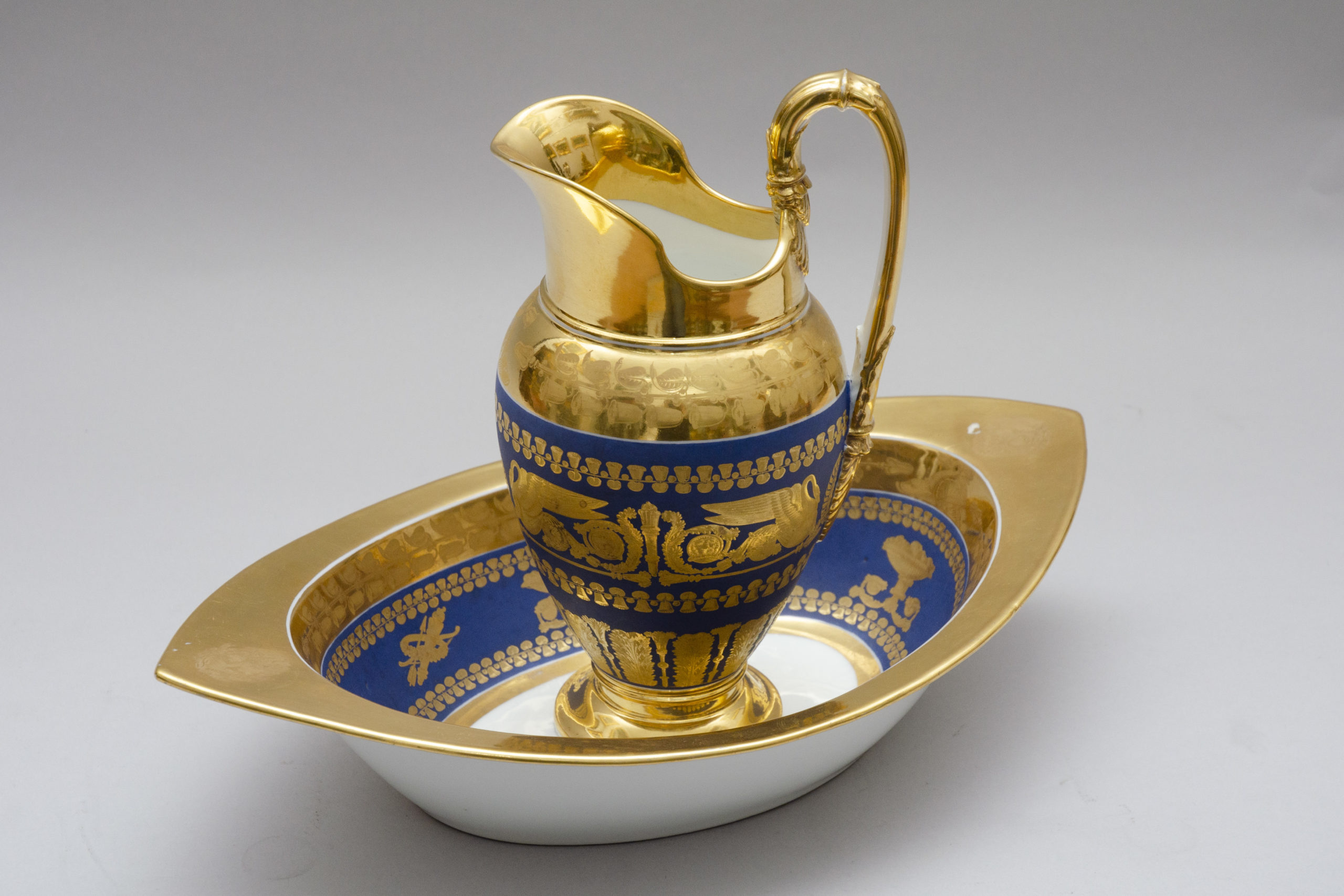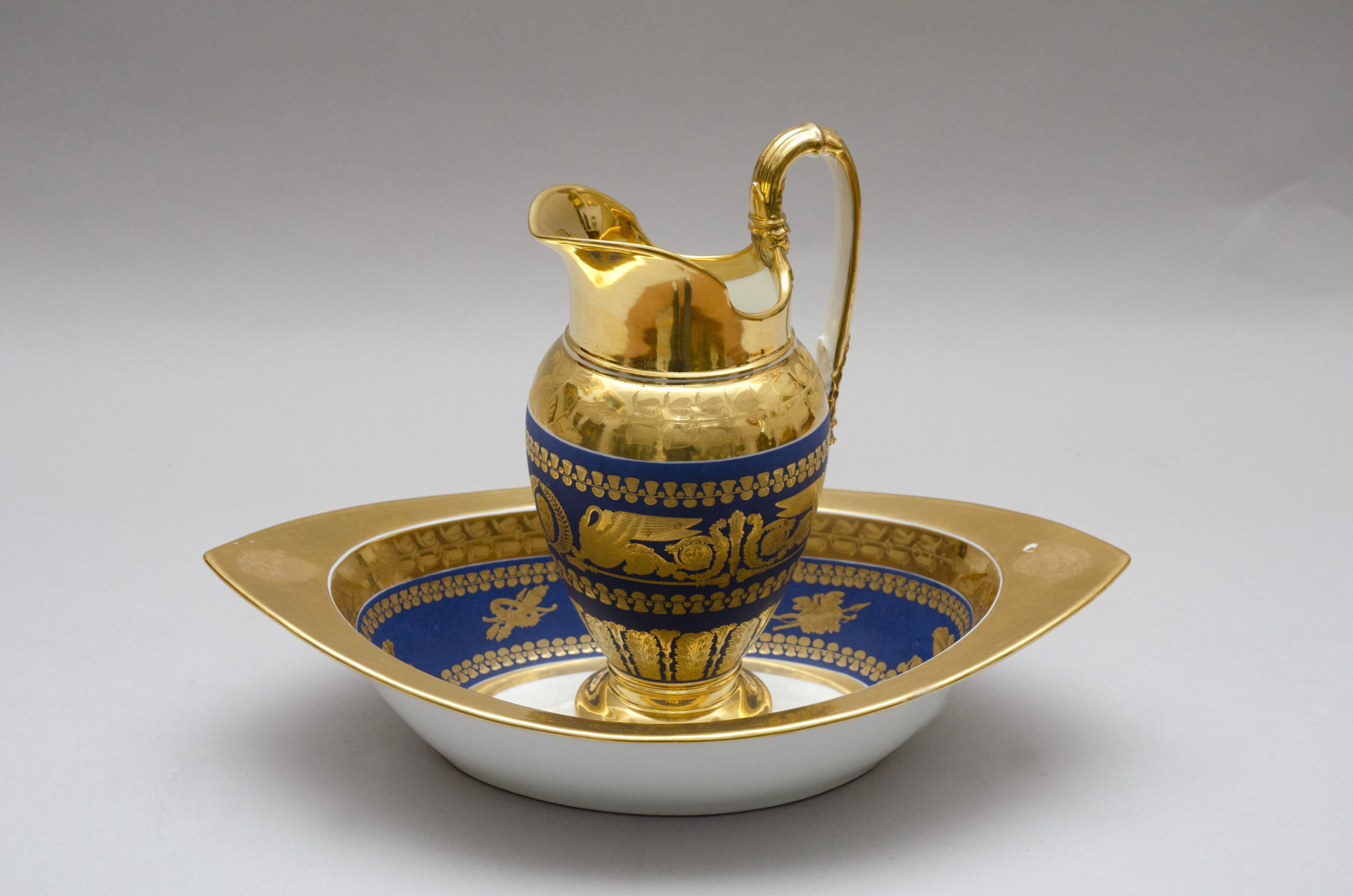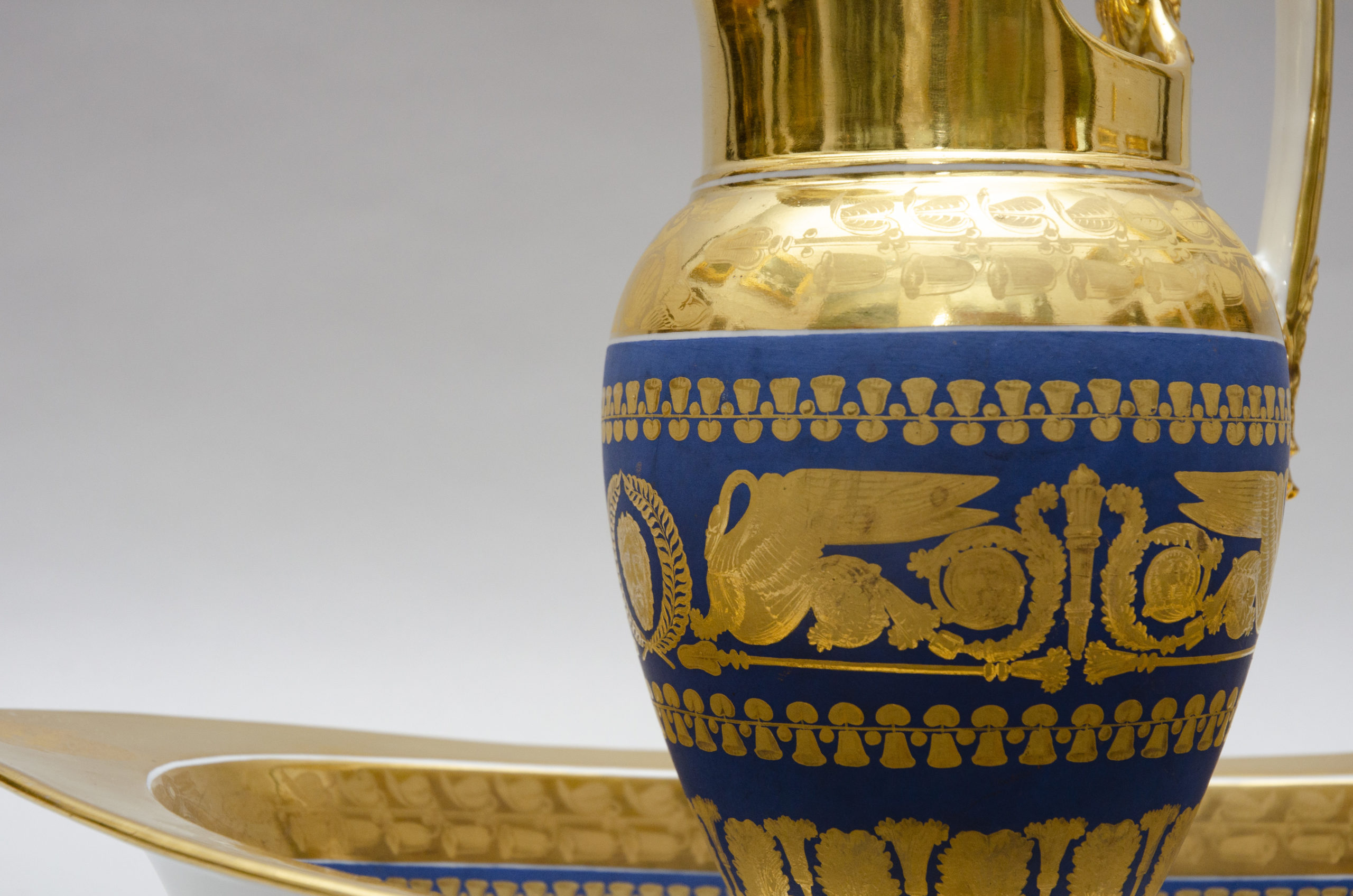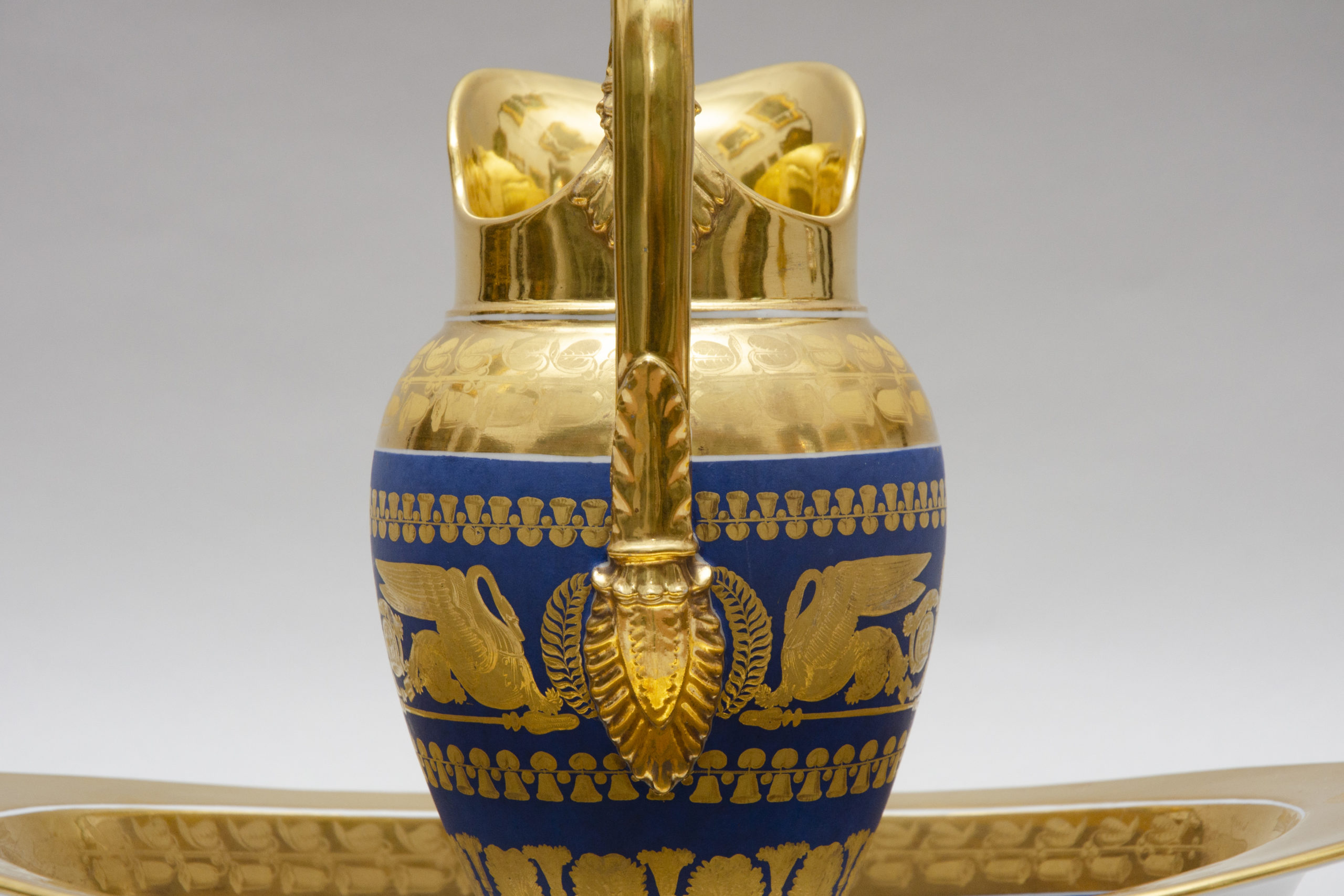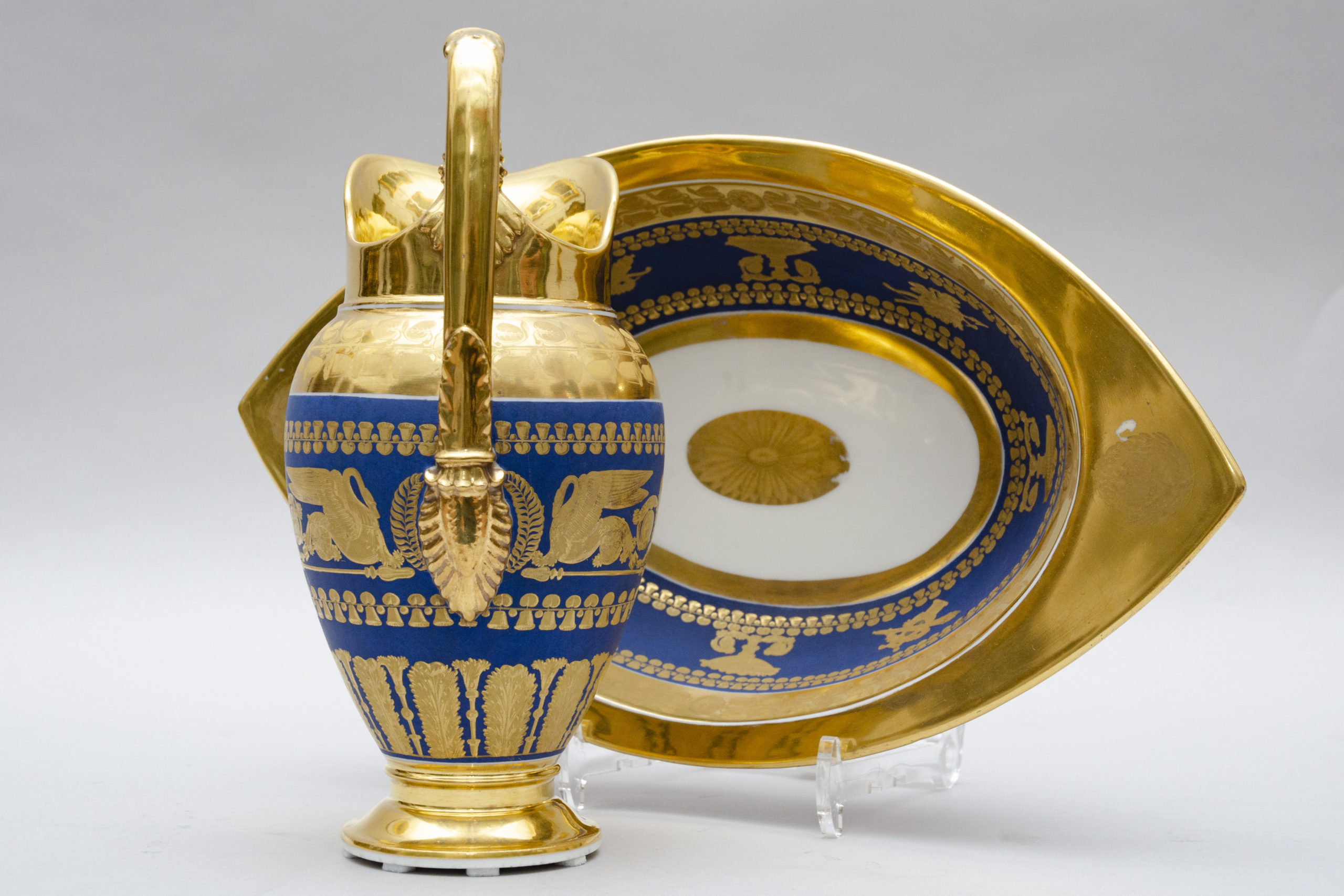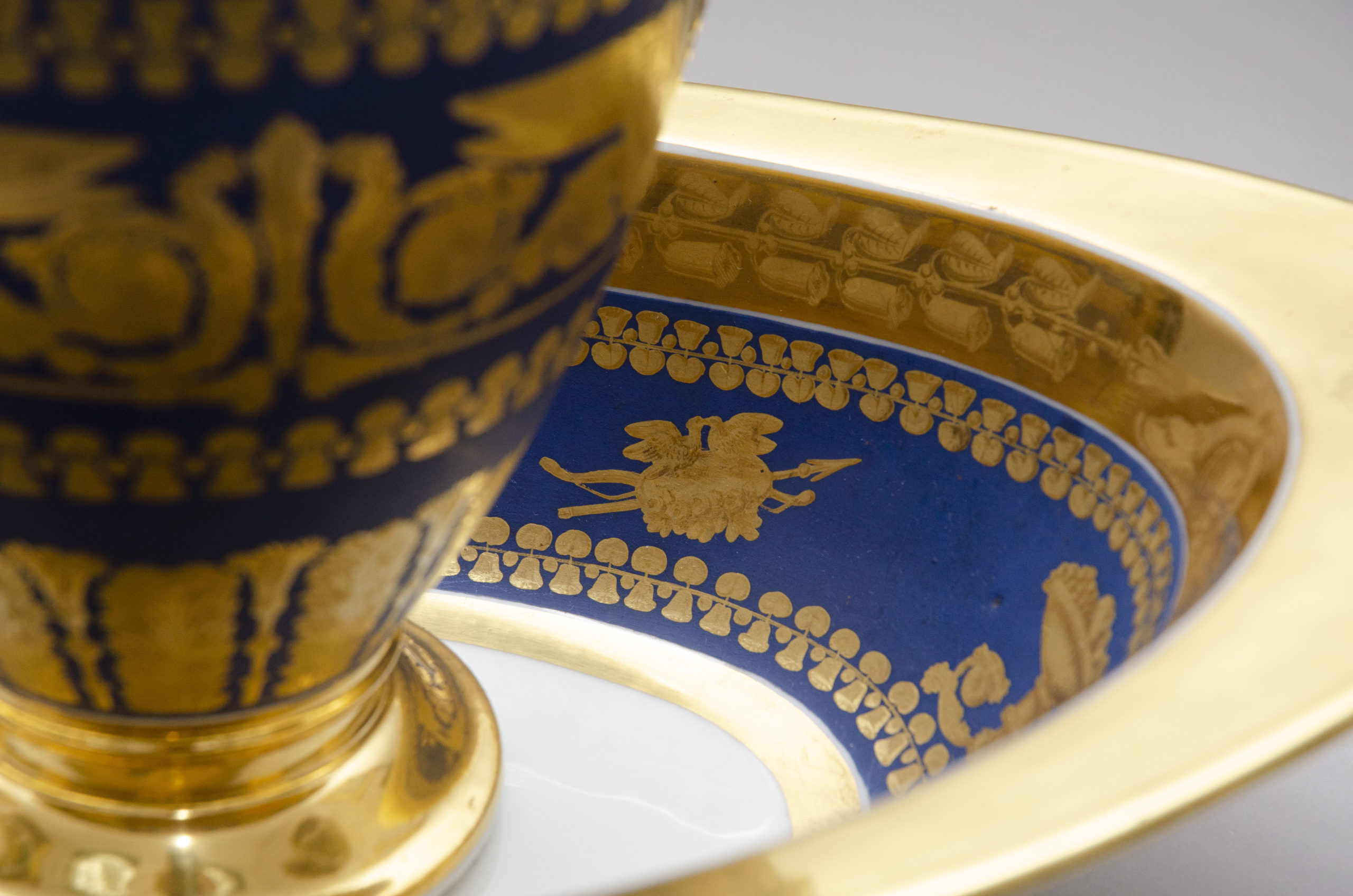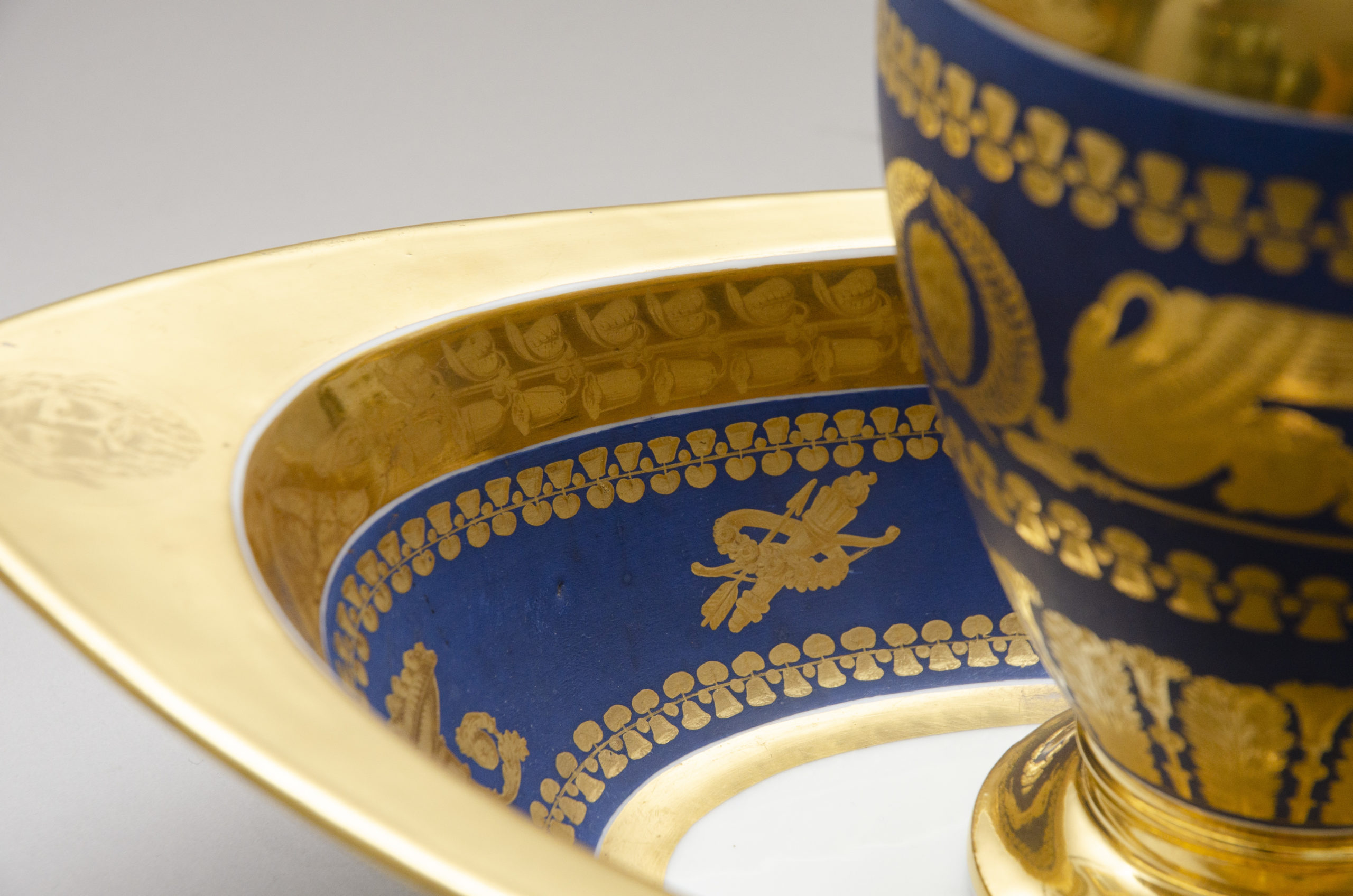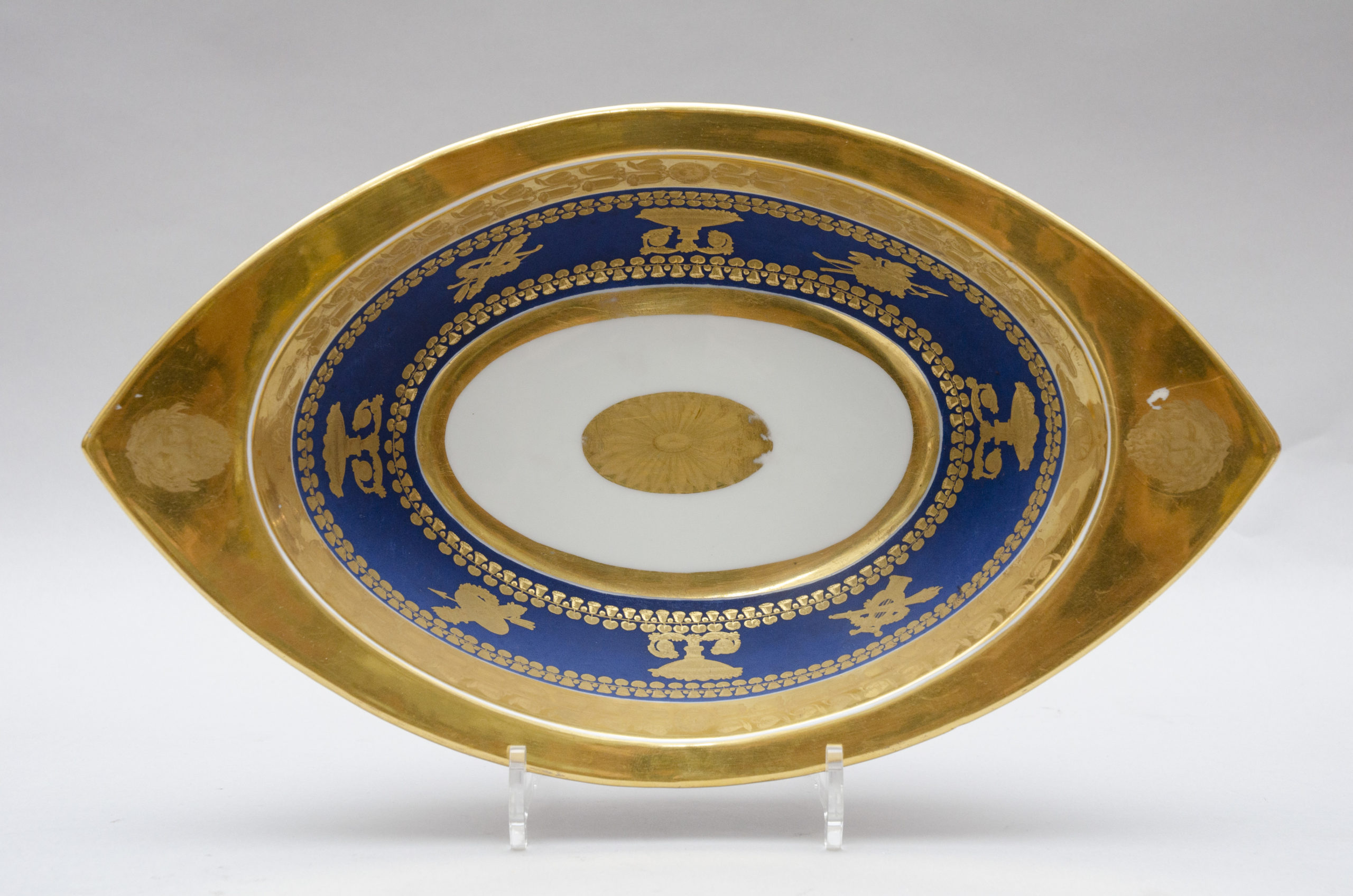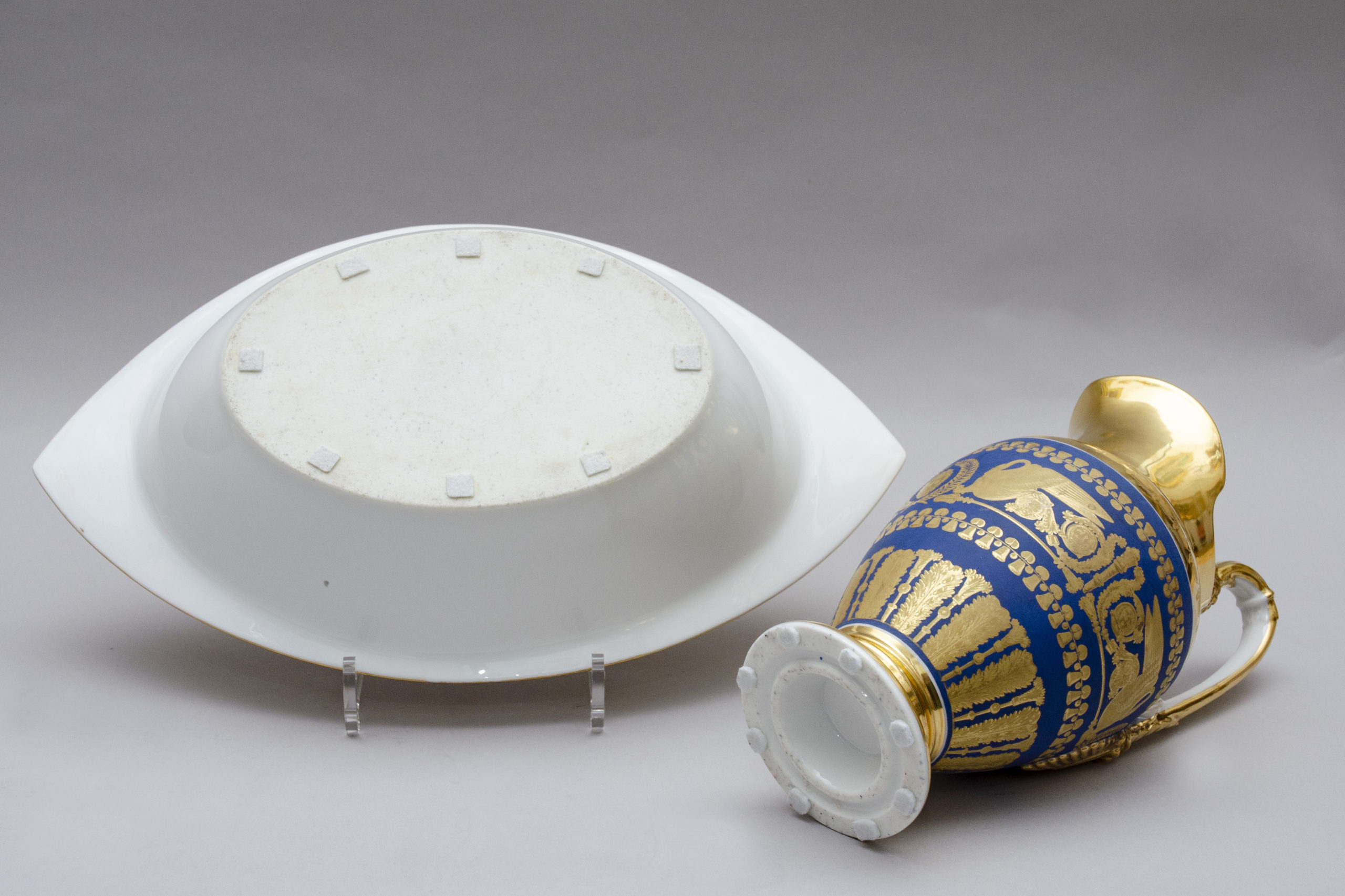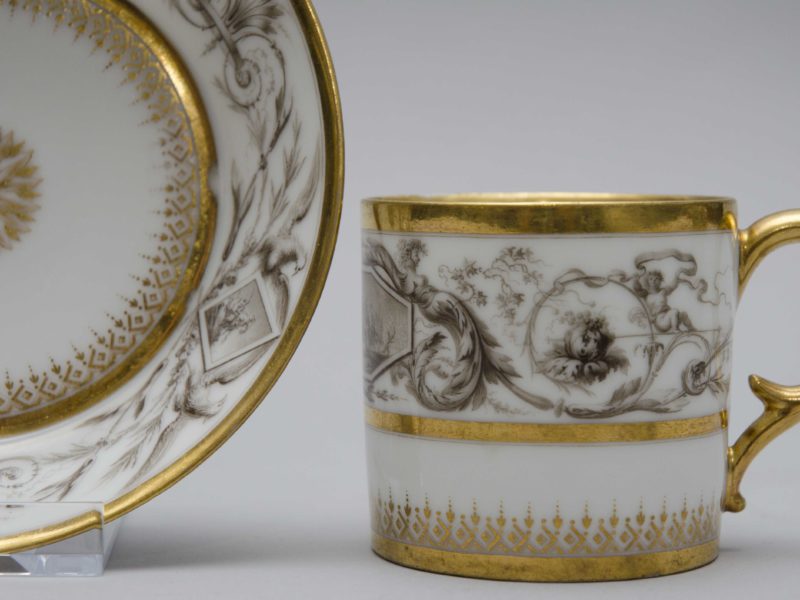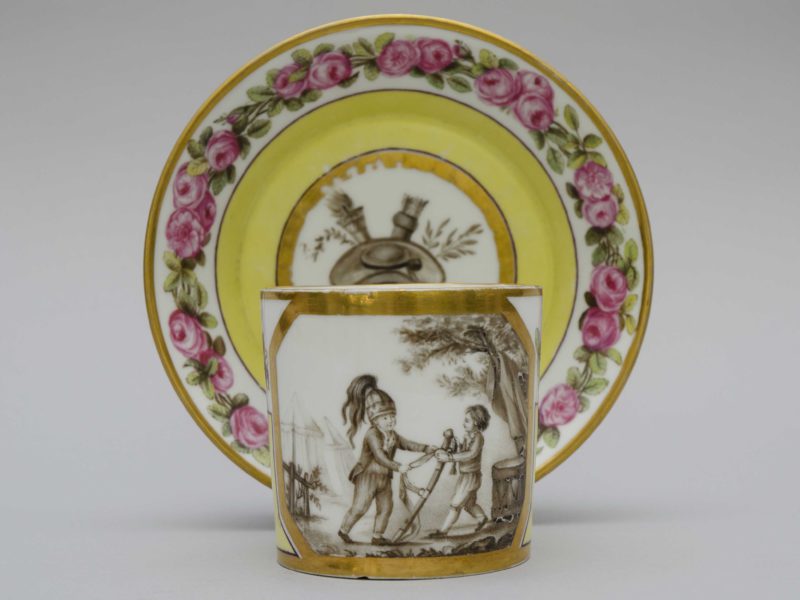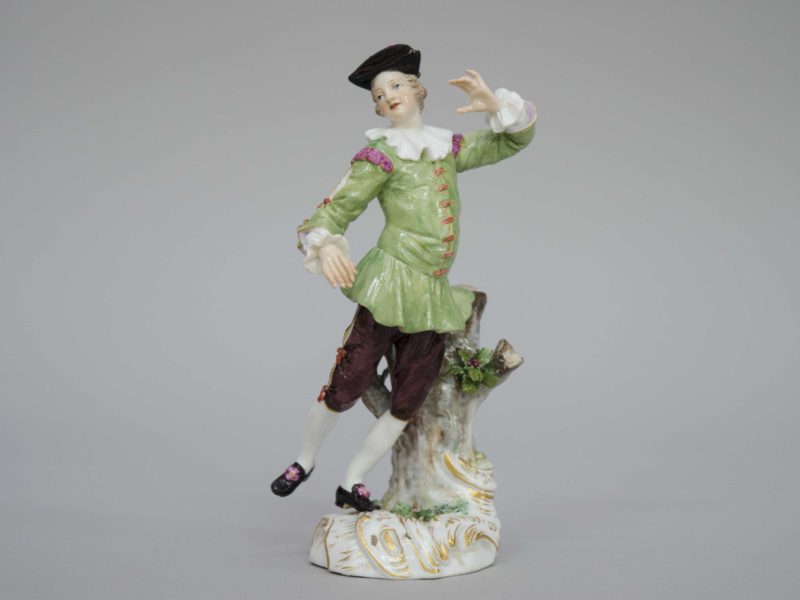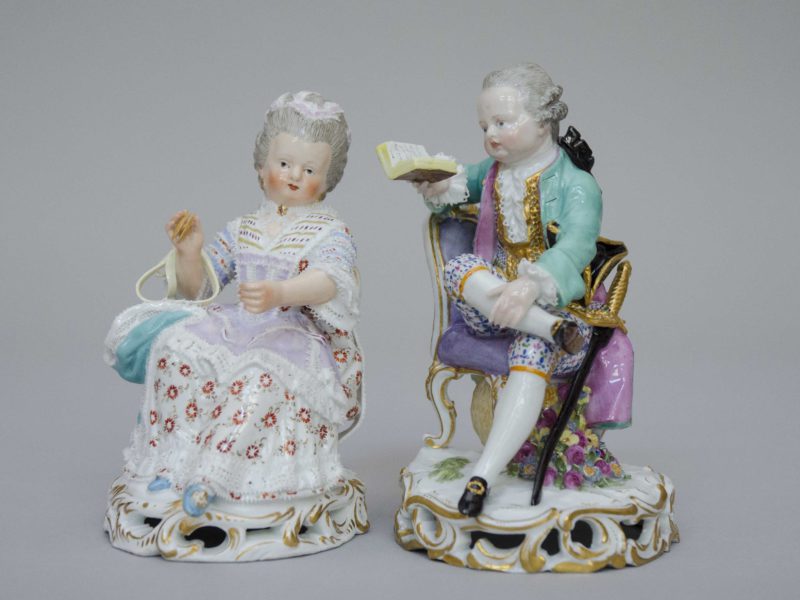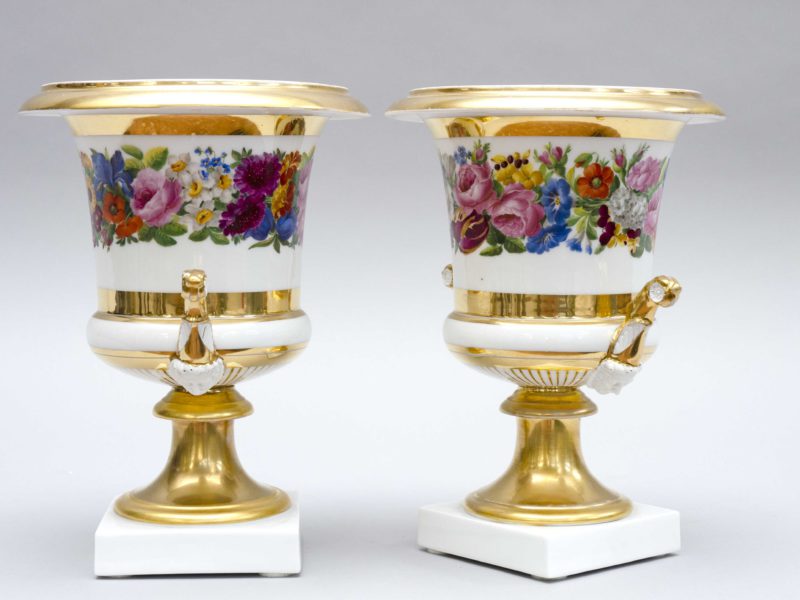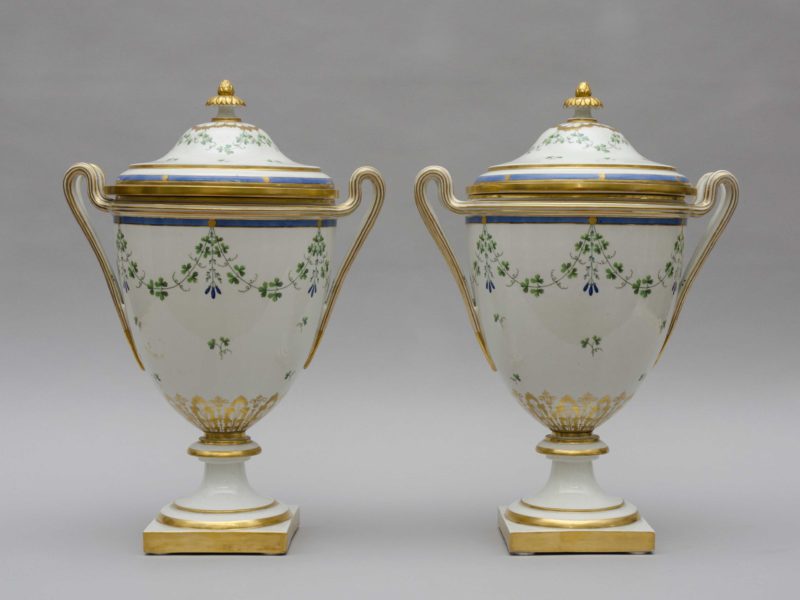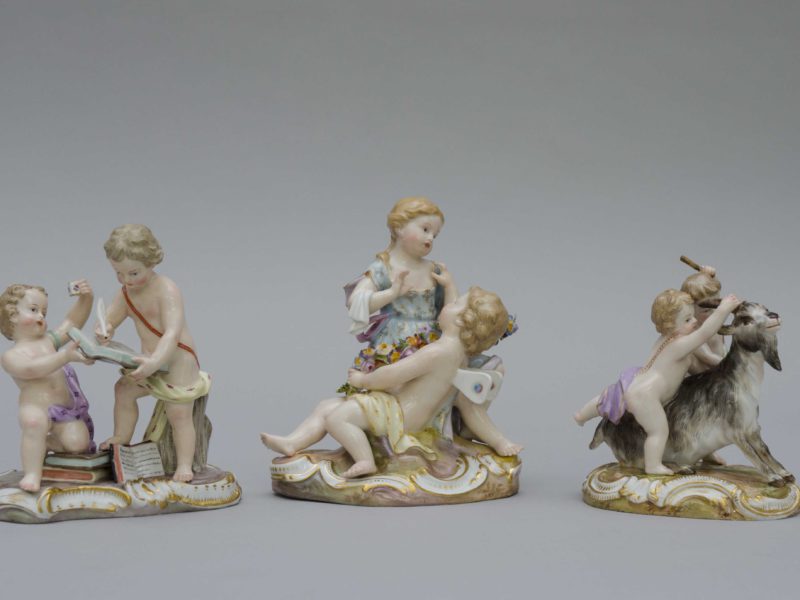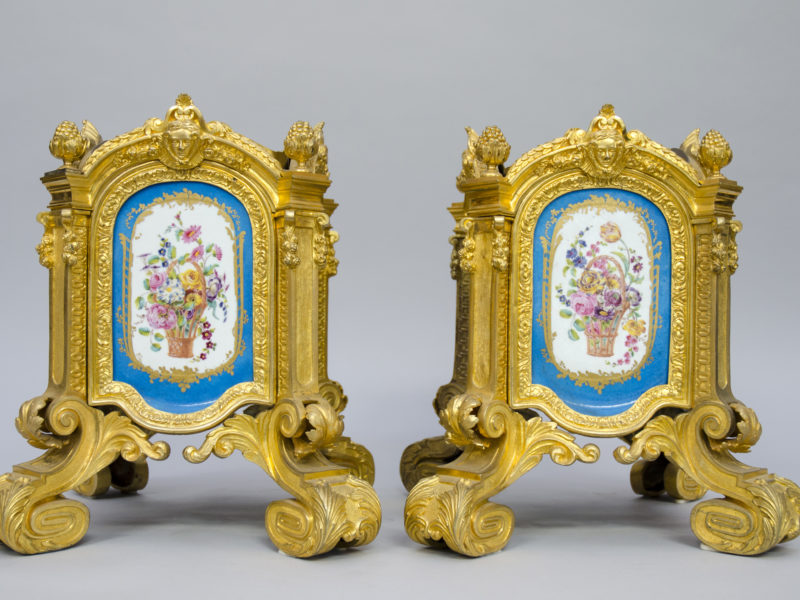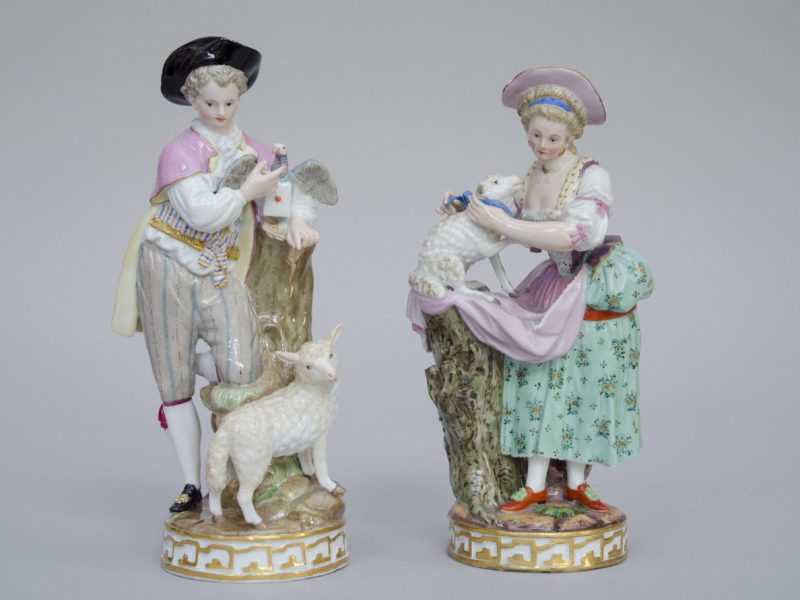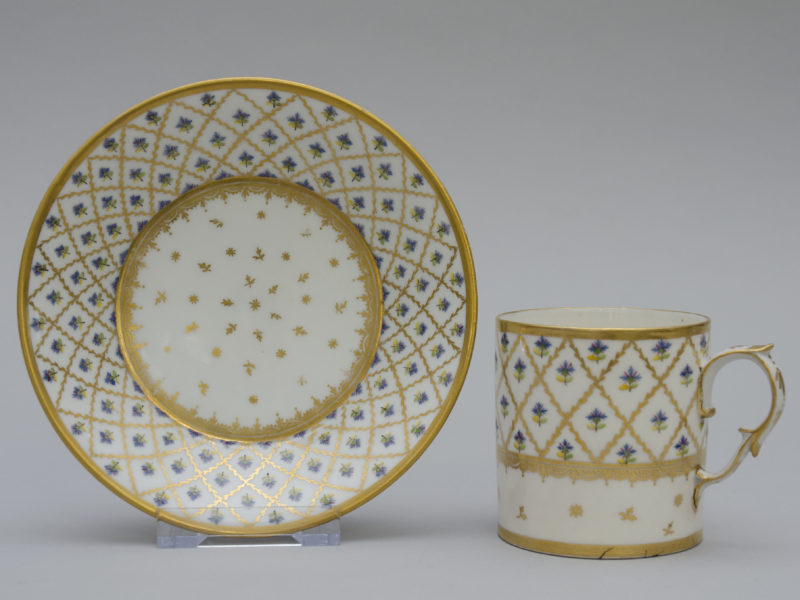Ewer and its basin, attributed to Dagoty in Paris
Out of stock
Superb ewer with matching “navette” shape basin (in the shape of a ship). Mat blue ground with engraved gold decorations in the purest Empire style. Swans, scrolls, barbed men’s heads, styled dolphins, and palm leaves. Great condition. A rarity on the antique market.
Size: H 28cm – basin: W 36cm x D 23cm
Attributed to the Dagoty manufactory in Paris, Empire period.
Lit: Descendants of the great engraver Gautier d’Agoty (1711-1785), this family of artists simplified his name during the French Revolution. It was the three sons of Jean-Baptiste André Gautier d’Agoty (portrait painter of Marie-Antoinette, who died in 1886), who launched themselves into the world of porcelain. Hired by Guérhard and Dihl, they then moved to a modest home ‘Blvd des Italiens’ as decorators on porcelain. In 1798, Pierre-Louis and Etienne took over a factory in bankruptcy and it is there, rue de Chevreuse, that will be born one of the most prestigious manufactures of Paris. In 1804, following the death of Etienne, Pierre-Louis takes the direction of the manufacture. In that same year he produced and obtained the support of the Empress Josephine and was authorized to sign his porcelains: “Manufacture of S.M. the Empress, P.L. Dagoty in Paris”. He opened a very elegant shop Boulevard Poissonnière. In 1806, he counts 100 workers and obtains a silver medal at the exhibition of the products of the Industry, he also exports his production until Russia. During the fall of Napoleon I in 1814, the factory lost its privilege but could count, in 1815, on the patronage of the Duchess of Angoulême until 1820. From 1816, Pierre Louis joins forces with François Maurice Honoré and his son Edouard. The Dagoty factory continued until the 1823s.
Perfect illustration of the “golden age” of Paris porcelain, the production of the Dagoty factory is characterized by the elegance of forms, the use of colours and a very thick gold.
Out of stock
Contact us